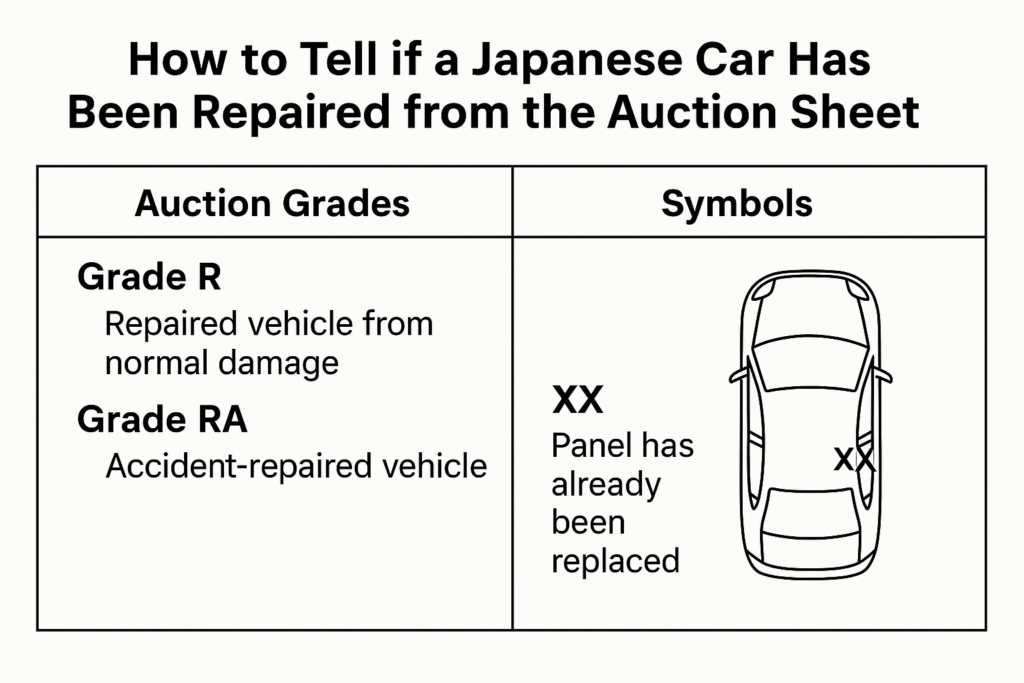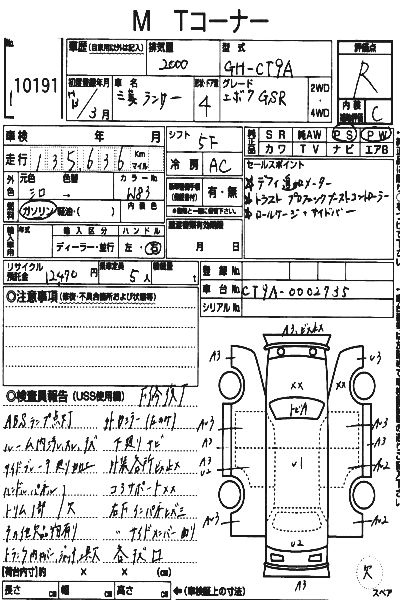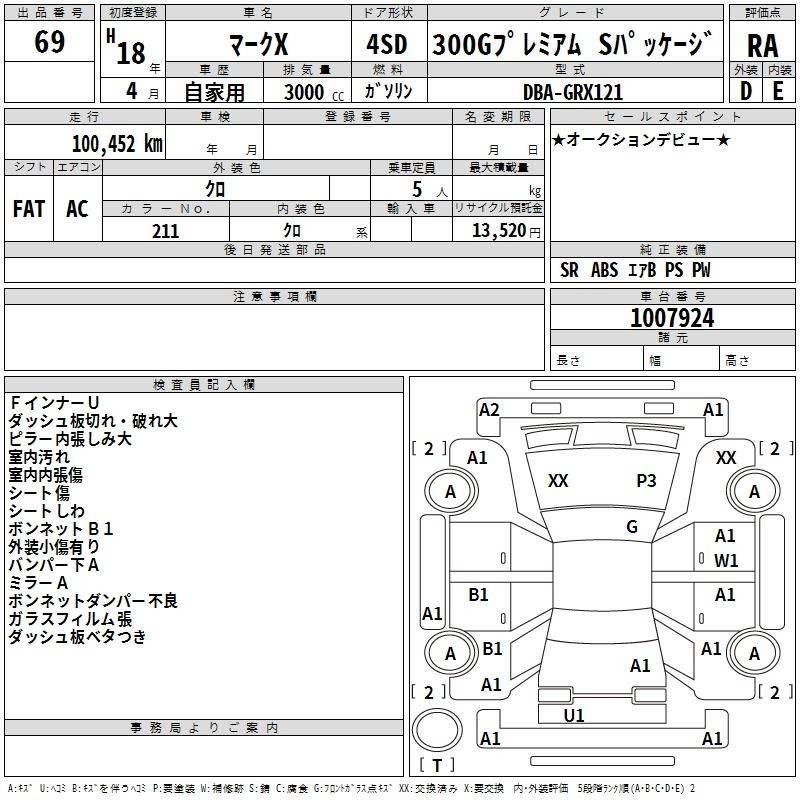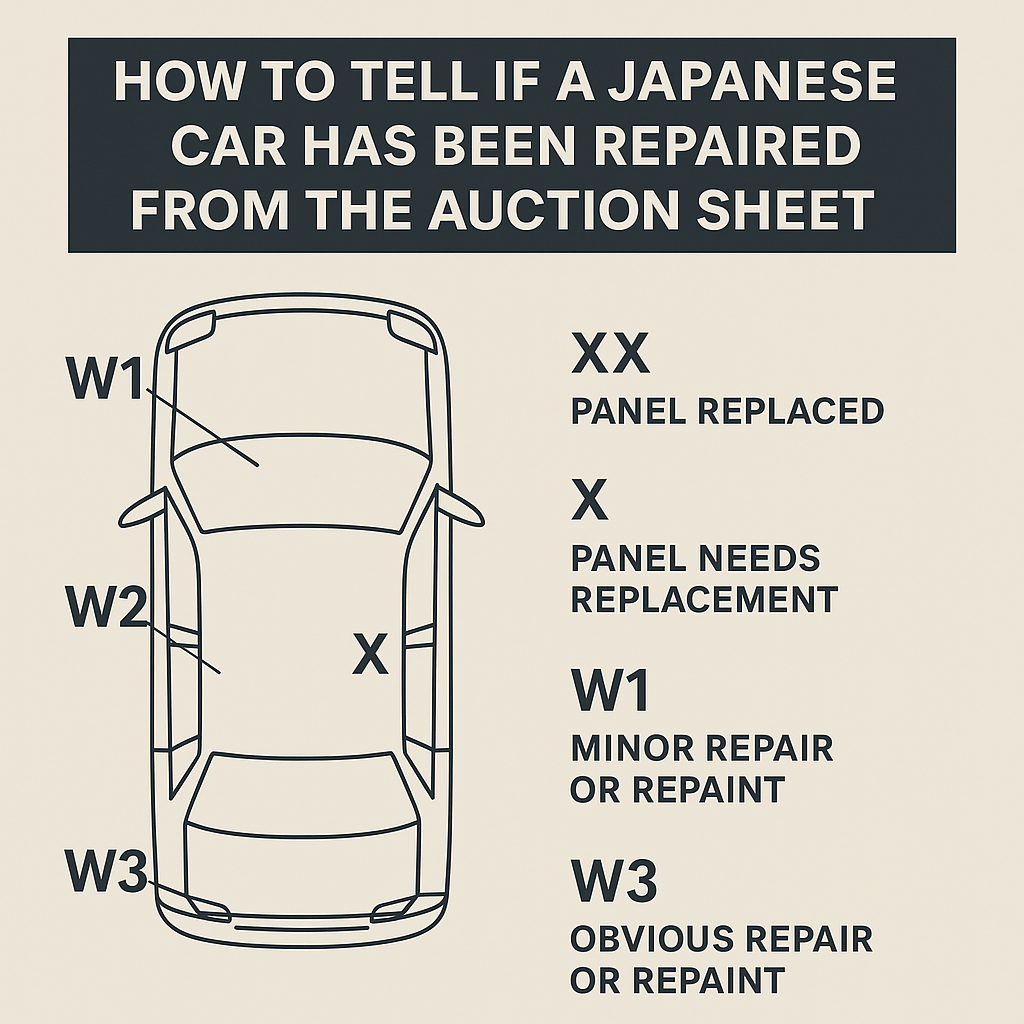When buying a used Japanese car, especially from an auction, one of the most important things to check is whether the vehicle has been repaired — and what kind of damage it had. Japanese auction sheets provide valuable insights if you know how to read them correctly.

In this article, we’ll explain how to tell if a car has been repaired by looking at the auction grade and the symbols shown on the auction sheet.
What Is an Auction Sheet?
An auction sheet is a report written by professional inspectors at Japanese car auctions. It gives details about the vehicle’s condition, including:
- Exterior and interior condition
- Mechanical state
- Accident history
- Any signs of repair or replacement
Now let’s focus on how you can detect repaired cars from the sheet.
Auction Grades That Indicate Repairs
Grade R – Repaired Vehicle

If the car is graded as R, it means the car was repaired after some normal damage — like a dent, rust, or a light panel replacement. These repairs are not necessarily from a major accident, but they still count as structural or panel work.
Grade RA – Accident-Repaired Vehicle

RA grade means the car was in an accident and has been repaired. This could include frame damage, airbag deployment, or other serious issues that needed professional repair work. Always be more cautious with RA-grade cars.
Symbols That Reveal Repairs

Aside from grades, symbols and letters on the auction sheet also tell you which parts were repaired or replaced. The most important ones are:
XX – Panel Replaced
If you see XX marked on any part of the car diagram, it means that panel has already been replaced. This usually points to previous damage.
X – Panel Needs Replacement
If a panel has X, it means it is damaged and should be replaced.
W1, W2, W3 – Wavy Panel (Repaired Quality)
- W1: Panel was repaired well.
- W2: Slight waves after repair (noticeable).
- W3: Clearly visible repair or poor finish.
These marks often indicate previous bodywork that might not be obvious at first glance.
What Should You Do?
- If you’re looking for a clean car, aim for auction grades 3.5, 4, or above with no “R” or “RA” grades.
- If you’re okay with minor repairs and want a better price, R grade vehicles can still be a good deal — just verify the repair quality.
- Always ask for the translated auction sheet and consult with an expert if you’re unsure about the symbols.
Final Thoughts
Understanding how to read the auction grade and repair symbols can save you from unexpected surprises after buying a Japanese import. Grades like R and RA, or markings like XX and X, clearly tell you the vehicle has undergone some kind of repair.
When in doubt, work with a trusted agent like JP Sheet, who can explain the auction sheet verification and inspect the car for you.
Tip: Always get a second opinion or inspection report before importing a car, especially if it’s graded R or RA. Better safe than sorry!